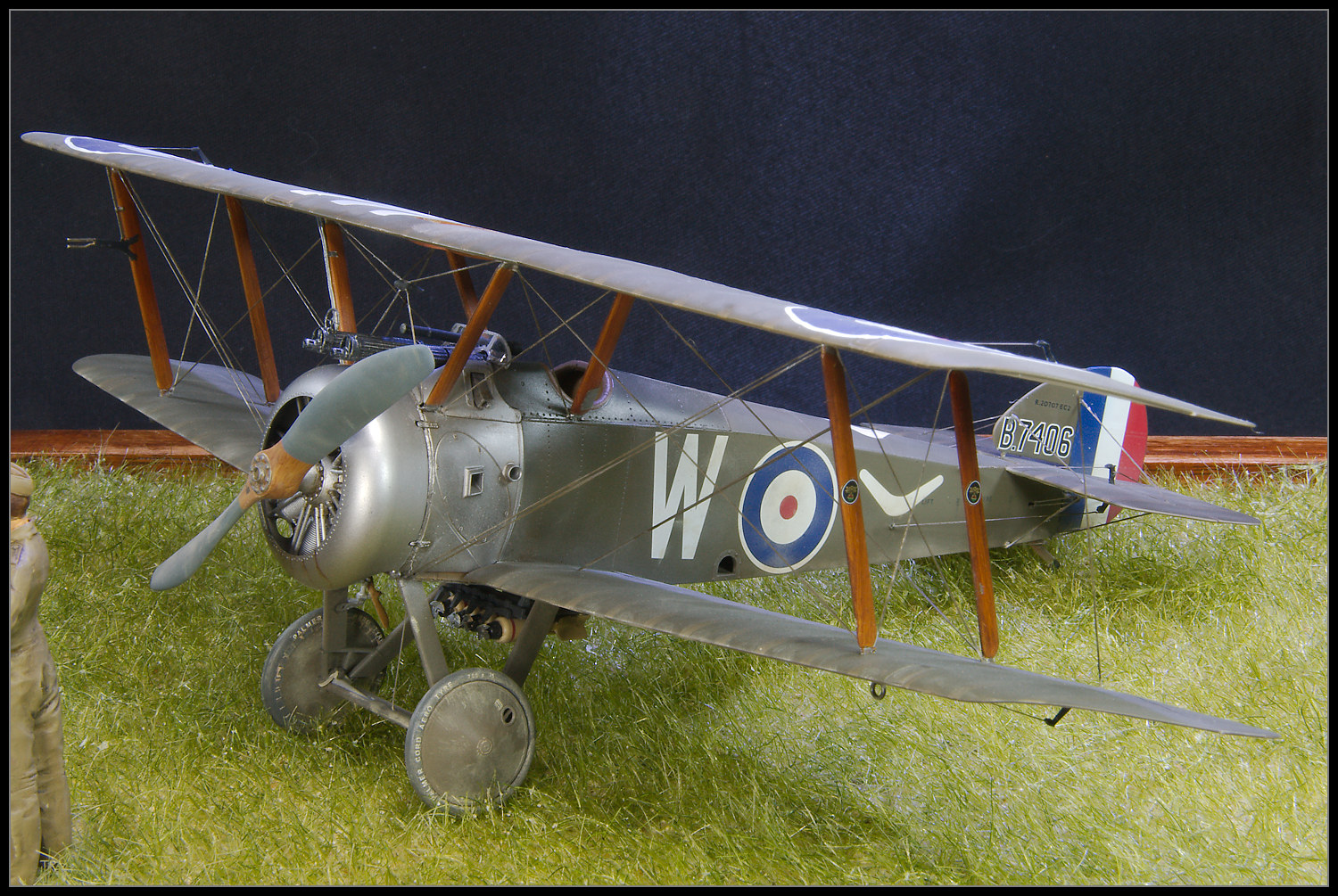The Sopwith Camel has always been my favourite World War One aircraft. perhaps it was all those Biggles books I read as a kid. So when Wingnut Wings (WNW) finally released a Camel (or 5) I figured it was time to build one.
I chose the "Clerget" boxing of the kit, primarily as it had a Kiwi option in the box. But in the end I decided an aircraft flown but H.G. Watson C Flight 4 Sqn Australian Flying Corps in March 1918. The main reason for this was that it will be easier to sell when I decide to get rid of it (being an Australian subject).
Herbert Gilles Watson was born in New Zealand but was in Australia when war broke out. He scored 14 victories with the AFC and was awarded the Distinguished Flying Cross. If you want to read more about him go here
The Kit
- Wingnut Wings 1/32 Camel F1. Clerget Kit No 32074
Aftermarket
- Barracuda Studios Wicker Seat
- HGW Seatbelts
References
- Windsock - Building the Wingnut Wings Sopwith Camels & LVG C.VI
It is quite expensive for the size of the book but I found it quite useful.
Paints
- Main Colour - Mr Paint PC10 late
- Clear Doped Lien - Tamiya Deck Tan
- Tamiya AS12 for silvers with various Aclads for shadings
- Various Vallejo Acrylics for details
Wood Effect
- Tamiya Deck Tan for the base
- Burnt Umber, Raw Umber, Burnt Sienna, Raw Sienna , Yellow Orche Oil paints
- Tamiya Clear Orange as an overcoat.
- Tamiya X22 For the gloss
- Mr Color Semi Gloss for the area around the cockpit
- SMS flat
Weathering
- Oil paints
- Tamiya Weathering Set
- Pigments
Not knowing much about WW I aircraft I had no idea how these things weather. Most of the ones I've seen built seemed clean. I figured there would have to be a bit of dust on the underside so I used the weathering set and some pigments to add some dust.
The underside weathering was based on an image from the Windsock book.
- Oil paints
- Tamiya Weathering Set
- Pigments
Not knowing much about WW I aircraft I had no idea how these things weather. Most of the ones I've seen built seemed clean. I figured there would have to be a bit of dust on the underside so I used the weathering set and some pigments to add some dust.
The underside weathering was based on an image from the Windsock book.
The Figures
- Blackdog RFC Pilot
- Blackdog RFC mechanic
These were base coated with Tamiya Khaki then the details and shading were done with Vallejo Acrylics. Outlines were done with oil paint.
These are the first 32 scale figures I've painted and I'm pretty happy how they turned out.
The Table and Tools
- The table was made from balsa wood and painted with thinned oil paints. The tools are bits and pieces from the spares box
The Base
- The surround is made from cheap skirting from Bunnings. I've made it so the ground section can be changed depending on the model.
- The Grass is from J's Modelworks. The grass probably needs a mow.
Build Thread
- There is a full build thread here
Conclusions
This build was a number of firsts for me, first 1/32 kit, first Wingnuts wings kit, first time rigging something and first time doing some large figures.
Overall the fit was good but there were some areas where it didn't live up to the the hype. Whether that was down to me or the kit, who knows (the build thread has details). Getting the decals to bend over right angles for the ailerons was also bit of a struggle.
I can't say I enjoyed the rigging process, I found it quite frustrating, with the CA glue either not sticking when I needed it to, or sticking when I didn't want it to. There are a couple of other WW I aircraft I like, the Bristol Fighter, DH-2 and Fe-2B in particular but after this it will be a while before I tackle another kit that needs rigging.
I did waste a fair bit of effort on the inside. It seems to be the thing to do in WW I modelling from what I saw online, and being the follower I am I just played along. Next time (if there is one) I will probably skip detailing parts that can't be seen.
I did waste a fair bit of effort on the inside. It seems to be the thing to do in WW I modelling from what I saw online, and being the follower I am I just played along. Next time (if there is one) I will probably skip detailing parts that can't be seen.
The instructions are excellent, probably the best in the business IMHO. The inclusion of photos of the actual aircraft (albeit a restoration) are very useful
Still, it's finished and in the cabinet.















































No comments :
Post a Comment